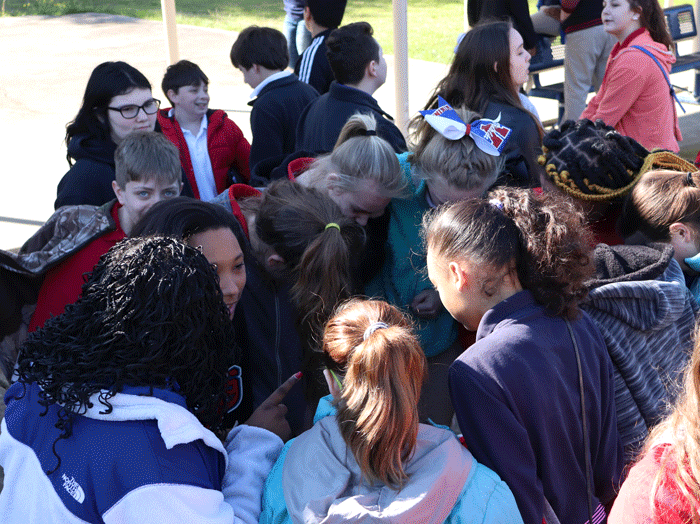Vidalia students honor school shooting victims
Published 1:01 am Thursday, March 15, 2018
Vidalia — More than 260 desks were empty Wednesday morning at Vidalia Junior High School.
The students who normally fill those seats assembled quietly on the front lawn of the school. Some circled together in groups, holding hands and praying. Others stood by and watched solemnely.
Students of Vidalia Jr. High School organized the walkout, held in conjunction with dozens of schools throughout the nation, exactly one month after 17 students and teachers were killed in Parkland, Fla., after a gunman opened fire in Marjory Stoneman Douglas High School. Schools in Adams County were on spring break this week and did not participate in the walkout.
The students stood outside for just 17 minutes — one minute for each person who died in Florida, before quietly filing back inside.
Nationwide, the rally was meant to pressure lawmakers to approve stronger gun control legislation but in Vidalia, students said they primarily wanted to stand in solidarity with students across the country and to pray for the families of those who died in one of the deadliest school shootings in recent history.
“I said, ‘God, thank you for being here with us today and there with the 17 people who died,’” said Kirstin Grove, 13, who led a prayer in her group. “‘I know we are all in your plan and the students in Florida are in your plan. I hope the parents can feel better soon. Amen.’”
Principal at Vidalia Junior High School, Christine Washington, said she had no idea students were interested in the national walkout until students came to her office early Wednesday morning and told her their plans.
“I didn’t know they were going to do it,” Washington said. “But I wanted to give them the opportunity to do this.”
Washington said when students first proposed the idea to her, she did not believe many people would leave the classroom to participate.
Instead, Washington said more than 260 students gathered in the front of the school.
Whereas some principals and administrators nationwide have voiced opposition to such student activism, Washington said she wholeheartedly supported her students.
“If kids feel this strongly about something, we should let them,” Washington said. “They are our future, and we want them to be compassionate. I feel like I saw a different side of my kids today. It was wonderful.”
Though the procession lasted fewer than 20 minutes, students said the act signified a larger shift in their understanding of school violence.
Since school shootings have repeatedly come into the news, students who were once just standoffish or unsociable now seem like potential threats, Dottie Davenport, 13, said.
“What if (someone) just decides to take it out on us?” Davenport said after the walkout. “There are some kids that are always alone.”
Her friend, Stevie Anderson, 13, chimed in.
“That’s the way the Parkland shooter was,” she said. “They said shooters are never people with lots of friends, they’re always the ones that feel … unwelcome.”
Tyhiera Harris, 12, said she and her friends talk often about what they would do in an active shooter situation.
“What are you supposed to do if you’re in the hallway or the bathroom and you hear it: ‘Pow! Pow! Pow!’?” Harris said after the walkout Wednesday. “We are supposed to hide behind desks, but if we aren’t in the classroom … where do we hide?”
The students said they know the national walkout was focused more on gun legislation than solidarity with the victims families, but their feelings on the subject are mixed.
“There’s one thing I know,” Anderson said. “And that’s that teachers shouldn’t have guns.”
Others, however, said maybe it would be a good idea to have one or two designated teachers with firearms in the event of an active shooter.
“Maybe just Mrs. Washington, or some of the coaches,” Grove said. “Somebody who could protect us.”
Though they disagreed on gun laws, Grove and Anderson said they could agree on how schools can make students feel more safe.
Community groups, Grove said, where all students are encouraged to talk openly to one another with their concerns — both with school and otherwise — without feeling alienated, would help unify the student body.
“Something we could all do together,” she said. “Because we have so many cliques and different groups, but not everybody can be a part of that. We want everyone to feel welcome, right?”
Grove and Anderson said they wanted to work with Washington to make the group a reality.
Washington said she was proud of her students’ initiative, and that she wanted to work with them to form the group.
“They want to pursue forming a non-violent group, and I want to help them,” Washington said. “They want to help.”







